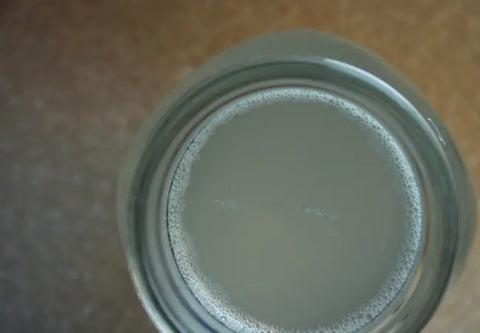
A few weeks into making water kefir I was having trouble with a few aspects of the culturing process. For one, the cultured water kefir was still terribly sweet, even after a lengthy first and second fermentation. The final flavored water kefir was also not nearly as carbonated as I had remembered it, when I first started culturing it a few years ago. In order to remedy these troubles I tried changing the culturing period to shorter and longer lengths. I also tried creating a more consistent temperature at which it cultured. Furthermore, I dabbled in adding different amounts of trace mineral drops to my water kefir. None of these things helped. Instead, it was when I switched to a different type of sugar that the barely sweet, bubbly water kefir I remember came back much to my excitement.

I Have A Few Theories On Why There Was Such A Difference:
- The grains simply preferred the sucanat as food and more readily cultured the sucanat-sweetened water than the white sugar-sweetened water. This would also explain the lack of sweetness at the end of culturing.
- The grains were accustomed to an unrefined sugar rather than a white sugar and I hadn’t given them a chance to switch over and produce what I consider a better water kefir.
- There was less overall sugar used to sweeten the water kefir grains in every batch. The sucanat I began using was a much larger granule than granulated white sugar. Therefore the actual amount of sugar per 1/2 cup was less than that of white sugar. (This would explain why it was less sweet, but not why the carbonation was much better.)
















